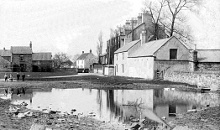
Tudhoe & Spennymoor Local History Society
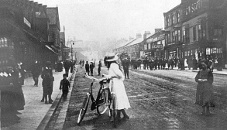


On the 7th May the Newcastle to Leeds section of the trial travelled from Newcastle via Chester-le-Street, Durham, Ferryhill, Darlington, Northallerton, Thirsk, York, and Tadcaster to Leeds.
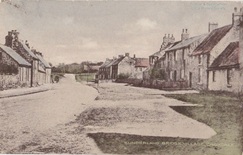
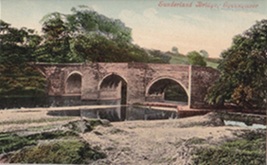 Croxdale - A considerable amount of interest was displayed in this district on Monday morning. According to the published times, the cars were not expected until 9, but about 8.30 two ascended the Sunderland Bridge bank in good style despite the heavy greasy state of the road, and were soon out of sight in the direction of Darlington.
Croxdale - A considerable amount of interest was displayed in this district on Monday morning. According to the published times, the cars were not expected until 9, but about 8.30 two ascended the Sunderland Bridge bank in good style despite the heavy greasy state of the road, and were soon out of sight in the direction of Darlington.
Shortly after 9, at the foot of the hill, there was a goodly muster of Brancepeth, Browney, and Burnigill people to witness the horse and carriages take the rather awkward turn over the Wear Bridge, while in the middle of the bank a well known gentleman in the Durham and Cleveland mining circles seemed to take a particular interest in the movements of the various cars. It seemed to an ordinary passer by that the gentleman referred to had a good idea of the weakness of their climbing power, as at the spot he had chosen a good many of the machines came to a standstill, and had to be assisted by manual labour.
At the entrance to the Sunderland Bridge village there was a large gathering of ladies and gentlemen from Croxdale Hall, Croxdale Wood House, etc, and the villagers generally. On the whole, although one machine had to take the hill from about midway in rather an unorthodox fashion, i.e. the wrong way on, the cars made capital progress. Stragglers came along until noon. At Butcher Race there was also a good gathering, of the Sedgefield, Cornforth, Coxhoe, etc, inhabitants. (11th May 1900 Durham County Advertiser)
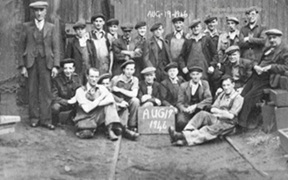 Messrs Coulson and Co. application to Spennymoor Urban Council - This firm made application to lay down a line of rails across the Merrington Lane road from their works to the large crane on the railway sidings. At present it was most difficult to convey large work from their yard to the railway, and if granted it would enable the firm to undertake much larger work.
Messrs Coulson and Co. application to Spennymoor Urban Council - This firm made application to lay down a line of rails across the Merrington Lane road from their works to the large crane on the railway sidings. At present it was most difficult to convey large work from their yard to the railway, and if granted it would enable the firm to undertake much larger work.
MR Black moved that the application be granted on condition that the firm take all responsibilities, and that they pay to the Council 1s per annum.
Mr Coldwell moved that it be not granted.
Mr Gartland: It will be much safer for the public granting them the wagonway across the road. At present large castings and other machinery has to be taken on to the railway by horse and wagon. In one case a large boiler fell off the wagon and blocked the road for several hours.
Mr Reavler: It would not be right to put anything in the way of local industry.
Mr Starforth moved that £50 per annum be charged for the right of way.
Mr Coldwell: I will second that.
Mr Hill thought £1 ample.
Mr Black: The more work Messrs Coulson and Co. do the better for all.
Mr Reavler: The public are much annoyed by the Weardale Company taking up so much of the tunnel, and we have to light and keep the footpath good at a cost of £10 for lighting. Coldwell, if you will make a motion to give the Weardale Company notice to stop using the tunnel I will second you.
After Mr Starforth’s amendment that the wayleave be £50 was put and lost, Mr Black’s motion was carried. (4th May 1900 Durham County Advertiser)
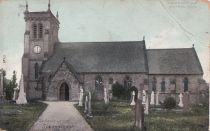 The New Vicar of Spennymoor -The Rev. Joseph Short, B.D., curate at St. Columba’s parish, Gateshead, has, as stated above, been appointed by the Dean and Chapter of Durham to the vicarage of St. Paul Spennymoor, vacant by the death of the Rev. John Gaskill, M.A. Mr Short had had a successful career since entering the church, owing chiefly to natural talent. He began life as a pupil teacher, and in time passed through St Bede’s Training College at Durham. Subsequently entering Durham University he graduated B.D. His first curacy was at St. Jude’s parish, South Shields, and after a stay of two years he became curate of Whickham, and was placed a curate-in-charge at Swalwell. During the 6 years Mr. Short occupied this position, he proved himself an able and zealous worker. He was also most acceptable as a preacher, and holding medium views in church matters, he sought to attain a feeling of friendliness throughout the parish generally. The Mission-room had soon to be enlarged, and next by his efforts the present church was erected. On leaving for Gateshead the parishioners of Swalwell showed their appreciation of his ministrations amongst them by the presentation of a purse of gold and an oak chair, Mrs Short receiving a silver tea and coffee service. The people of Spennymoor may congratulate themselves on the appointment of such a thoughtful and earnest clergyman as their vicar. Mr Short married the eldest daughter of Mr George Aird, of Seaham Harbour, where the rev. gentleman is well known and greatly esteemed.(11th May 1900 Durham County Advertiser)
The New Vicar of Spennymoor -The Rev. Joseph Short, B.D., curate at St. Columba’s parish, Gateshead, has, as stated above, been appointed by the Dean and Chapter of Durham to the vicarage of St. Paul Spennymoor, vacant by the death of the Rev. John Gaskill, M.A. Mr Short had had a successful career since entering the church, owing chiefly to natural talent. He began life as a pupil teacher, and in time passed through St Bede’s Training College at Durham. Subsequently entering Durham University he graduated B.D. His first curacy was at St. Jude’s parish, South Shields, and after a stay of two years he became curate of Whickham, and was placed a curate-in-charge at Swalwell. During the 6 years Mr. Short occupied this position, he proved himself an able and zealous worker. He was also most acceptable as a preacher, and holding medium views in church matters, he sought to attain a feeling of friendliness throughout the parish generally. The Mission-room had soon to be enlarged, and next by his efforts the present church was erected. On leaving for Gateshead the parishioners of Swalwell showed their appreciation of his ministrations amongst them by the presentation of a purse of gold and an oak chair, Mrs Short receiving a silver tea and coffee service. The people of Spennymoor may congratulate themselves on the appointment of such a thoughtful and earnest clergyman as their vicar. Mr Short married the eldest daughter of Mr George Aird, of Seaham Harbour, where the rev. gentleman is well known and greatly esteemed.(11th May 1900 Durham County Advertiser)
In 1881 Joseph Short, (b1862 Oxhill, Stanley), was attending Durham Training College at St Giles, Durham City. He married Alice Aird (b1859 Seaham Harbour) in 1888 and in 1891 he is curate of St Jude's C of E, South Shields and they are living at 24 Westoe Parade, South Shields with Alice's sisters Grace Margaret Aird (b1861 Seaham Harbour) and Elizabeth Aird (b1870 Hawick, Scotland). In 1901 and 1911 Joseph, Alice and her sisters are living at The Vicarage, Spennymoor, Grace Margaret is a school teacher and Elizabeth is housekeeper at the Vicarage. In 1915 Joseph becomes vicar at St Helen's Auckland and then vicar at Kelloe in 1923. He died on 23rd January 1938 and was buried at Kelloe.
Primitive Methodist Circuit - At the quarterly meeting of the Spennymoor Primitive Methodist Circuit, held on Saturday, the Rev. D McKinley received and accepted a most hearty and unanimous invitation to remain in the circuit until the connexional year ending July 1902, making in all a stay of eight years in the circuit. (28th May 1900 Daily Gazette for Middlesbrough)
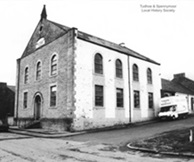 Primitive Methodism - It is 45 years since Primitive Methodism was introduced into Spennymoor. In 1854 a small society was formed, and for some time the only place of worship was a small cottage in Pitt street. Three years after, in 1857, a great effort was made, and what was to the people in those days a splendid chapel, was built in George street. Such was the progress of the church that in 12 years the chapel became far too small. In 1869 a good site was secured in Rosa street and Edward street, and the present commodious chapel erected. The property which includes the chapel with seating accommodation for 700 people, the schoolroom and the caretaker’s house cost nearly £2,400. About £900 has been spent since in alterations and improvements. Owing to the continued increase in he number of scholars attending the Sunday School, it has become necessary to enlarge the premises. There are at present over 300 scholars on the roll. It has been decided, therefore, to provide more accommodation, by the addition of six classrooms, together with other needful improvements. The trustees of the society are desirous of raising the requisite cost without adding to their present liabilities, and for this purpose a Polytechnic Exhibition is to be held this week, and will continue for seven days in the Edward street Schoolroom. The Rev. D McKinley is the Superintendent Minister, and the Rev. G C Sharp his colleague. Mr J Beckwith is treasurer and Mr J W Pratt secretary. Dr R S Anderson is to open the proceedings on Wednesday. (22nd May 1900 Daily Gazette for Middlesbrough)
Primitive Methodism - It is 45 years since Primitive Methodism was introduced into Spennymoor. In 1854 a small society was formed, and for some time the only place of worship was a small cottage in Pitt street. Three years after, in 1857, a great effort was made, and what was to the people in those days a splendid chapel, was built in George street. Such was the progress of the church that in 12 years the chapel became far too small. In 1869 a good site was secured in Rosa street and Edward street, and the present commodious chapel erected. The property which includes the chapel with seating accommodation for 700 people, the schoolroom and the caretaker’s house cost nearly £2,400. About £900 has been spent since in alterations and improvements. Owing to the continued increase in he number of scholars attending the Sunday School, it has become necessary to enlarge the premises. There are at present over 300 scholars on the roll. It has been decided, therefore, to provide more accommodation, by the addition of six classrooms, together with other needful improvements. The trustees of the society are desirous of raising the requisite cost without adding to their present liabilities, and for this purpose a Polytechnic Exhibition is to be held this week, and will continue for seven days in the Edward street Schoolroom. The Rev. D McKinley is the Superintendent Minister, and the Rev. G C Sharp his colleague. Mr J Beckwith is treasurer and Mr J W Pratt secretary. Dr R S Anderson is to open the proceedings on Wednesday. (22nd May 1900 Daily Gazette for Middlesbrough)
POLYTECHNIC EXHIBITION AT SPENNYMOOR - Yesterday afternoon a seven days grand Polytechnic Exhibition was opened by Dr R S Anderson, of Hillingdon House, the object of which is to raise money for the purpose of extending the Primitive Methodist Schoolroom. It is intended to add six classrooms and make other necessary alterations in order to meet the requirements of the increasing Sunday School.
The exhibition consists of a splendid collection of curios, fine art, and mechanical exhibits from Palestine, Egypt, India, America, China, Japan, and Africa, including an interesting collection from the Transvaal. During each evening concerts are also held, the chief artistes being Mr R G Suggett, humorist, Darlington; Messrs Thompson, Bosanko, Bateman, Wilson, Forrest, Close, Grieves, Starforth, White, Messrs Baines, Allen, Buston, Wightman, Brown, Dobson, and T Grieves (humorist and elocutionist), the Primitive Methodist String Band, etc.
The most important exhibits included the following:-
Splendid model of the s.s. Bosnia of the Furness Line of steamers, also models of sailing vessels, kindly lent by Sir Chris Furness. There was a splendid collection of curios lent by Mrs Duncombe Shafto, of Whitworth hall, including oil painting of Mark Shafto, who purchased the Whitworth Estate in 1651.; Mrs Shafto who lived to the age of 103 years; a model of St Paul’s Church, Spennymoor by Mr Tolmie; a collection of curios lent by County Councillor Dodd, including a rare collection of Dickens relics, and the books offered to form a library for Spennymoor; also a collection of armoury by Mr Kirkup. The opening proceedings commenced by the singing of a hymn andprayer offered by the Rev. J Hope Scott.
The Rev. D McKinley, superintendent minister, before introducing Dr Anderson, said on account of the increase of scholars in the Sunday School they were under the necessity of enlarging the premises. They would have liked to enlarge on a greater scale, but the cost would be too great. The present debt on the premises is about £300. The probable cost of the improvements would be between £300 and £400.
Dr Anderson, who received a most hearty welcome, spoke of the pleasure it afforded him to be present to open the exhibition. He declared that Sunday Schools are doing great work towards the formation of the national character, and when our sons grow up and go into other countries they carry that good training with them. This is one reason why the British are such good colonists. It is the good training in the Sunday Schools which makes them favour the liberty of all races in all parts of the world. He had much pleasure in declaring the exhibition open and hoped that great success would attend the same.
Mr J Rogerson moved that the best thanks be given to Dr Anderson for his able address and his services rendered in opening the exhibition.
The Rev. J Hope Scott MA (Presbyterian), in a very elegant speech seconded the resolution, which was carried with great enthusiasm. Dr Anderson briefly replied to the vote of thanks, and the exhibition was then declared open. Mr J M Paulton MP sent a letter regretting his inability to be present, and enclosed a cheque for 21s. (24th May 1900 Northern Echo)
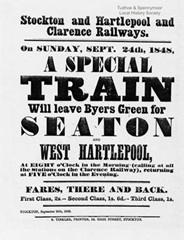 Train excursions began soon after the start of the passenger railways in 1825 as shown on this poster from 1848.
Train excursions began soon after the start of the passenger railways in 1825 as shown on this poster from 1848.
By 1900 the following excursions were being advertised to Spennymoor.
Excursions North-Eastern Railway
Excursion Trains from Sunderland. Monday May 14, at 11.20am for Spennymoor
Excursion Trains from Jarrow. Monday May 14, at 10.39am for Spennymoor
Excursion Trains from Stockton. Monday May 14, at 11.08am to Spennymoor
Local Excursions
From South Shields. Monday May 14, to Spennymoor depart 10.40am return 6.35pm.
From Tynemouth. Monday May 14, to Spennymoor depart 12.20am return 6.35pm.
(11th May 1900 Sunderland Daily Echo, 11th May 1900 Jarrow Express, 12th May 1900 Stockton Herald South Durham, 11th May 1900 Shields Daily Gazette)
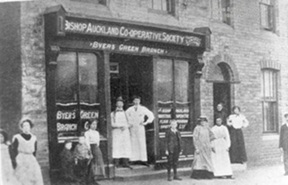 MOTHERS HELP - Dear Daddy, This is the first time I have had the pleasure of writing to you. I have now left school and am a great help to mother. I am thirteen years of age. We are living at Byers Green Colliery. There are not many houses here, as it is a very small village, situated between Spennymoor and Bishop Auckland. Hoping you have room for my letter, and sending my love to you and your children, I remain yours affectionately.
MOTHERS HELP - Dear Daddy, This is the first time I have had the pleasure of writing to you. I have now left school and am a great help to mother. I am thirteen years of age. We are living at Byers Green Colliery. There are not many houses here, as it is a very small village, situated between Spennymoor and Bishop Auckland. Hoping you have room for my letter, and sending my love to you and your children, I remain yours affectionately.
Margaret Goundry 34, Busty-terrace, Byers Green Colliery, County Durham. (19th May 1900 Northern Gazette)
Could this be Margaret Goundry (b1886), daughter of Joseph Goundry and Emma Nuthall, who had six older siblings and one younger brother?
Joseph and Emma married in 1864 and the family lived in many mining villages including Hunwick, Bowden Close, Sunnybrow, Coxhoe, Binchester, and by 1891 Byers Green Colliery where they finally settled.
In 1911 Joseph, aged 73 a retired miner, and Emma, 65, are living with their eldest son Robert, aged 45 and youngest son James, aged 23, in Byers Green Colliery.
Spennymoor Musical Society - By invitation a crowded audience assembled in the Town Hall, Spennymoor, on Thursday night, when the Spennymoor Musical Society gave their annual invitation concert. The pieces chosen were Mendelssohn’s “Hymn of Praise” and Somervals “Forsaken Merman”. The artistes engaged were Miss Janet Reed, soprano, North Shields; Mr Tom Child, tenor, Leeds and Mr. Wm. Lyall, bass, Newcastle Cathedral. The piece opened with a well played symphony by the orchestra, which was ably led by Mr F Lonsdale of Langley Moor. Mr Tom Child, the capable Yorkshire tenor, came in for a good share of work, which gave splendid opportunities for his undoubted vocal talent. Special mention may be made of the expressive manner in which he sang “He counteth all your sorrows”. Miss Janet Reed sang with admirable effect “I waited for the Lord”, and the duet with Mr Child, “My song shall always be Thy mercy” was so beautifully sung and appreciated that both had to bow their acknowledgements. The chorus was exceedingly good and well balanced, and was heard at its best in “The night is departing”. The performance was an excellent one, and reflected very great credit on the conductor, the Rev. Canon Firth, who seems to have spared neither time nor energy in making the performance a thorough success.
At this part of the programme the Rev. J Hope Scott moved that public recognition be made of the valuable services of Canon Firth had rendered to the society during the past nine months.
Major Junor seconded the motion, which was carried with acclamation.
The second portion of the programme included “The Forsaken Merman” and a miscellaneous programme. Mr Lyall sang the bass solo in “The Forsaken Merman” and the choir did full justice to the series of choruses therein. Mr T Child sang “The Sailor’s Grave” which was encored, and in reply sang “Let me like a soldier fall”. Mrs Reed sang “The scent of the lilies” and being encored gave “On the banks of Allen Water”. Mr Lyall sang “The Deathless Army”, r Lonsdale gave a splendid viola solo, and Mr C Large fairly surprised everybody with his piccolo solo, which was loudly applauded, and deservedly encored. Mr F J Rowland as secretary had all the arrangements in hand, and to his efforts the success of the concert is very much due, Mr L Wightman was an efficient pianist, and Mr G W Rippon organist. The hall was tastefully decorated by Mr T N Wallis, draper, Spennymoor. (12th May 1900 Northern Echo)
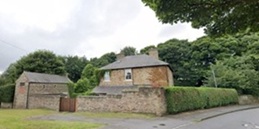 Property Sale at Spennymoor - At the Shafto Arms Hotel, Spennymoor, on Monday night, Mr J Coldwell offered for sale several lots of leasehold and freehold properties. The leasehold dwelling-house, Oak Tree House, Tudhoe village, was withdrawn at £510. Two freehold dwelling-houses and two building sites adjoining, in William-street, Spennymoor, were knocked down at £315, Mr James Black, of Low Spennymoor, being the purchaser. Two freehold cottages in Jackson-street, were sold to Mr Hunter for £115. (2nd May 1900 North Star Darlington)
Property Sale at Spennymoor - At the Shafto Arms Hotel, Spennymoor, on Monday night, Mr J Coldwell offered for sale several lots of leasehold and freehold properties. The leasehold dwelling-house, Oak Tree House, Tudhoe village, was withdrawn at £510. Two freehold dwelling-houses and two building sites adjoining, in William-street, Spennymoor, were knocked down at £315, Mr James Black, of Low Spennymoor, being the purchaser. Two freehold cottages in Jackson-street, were sold to Mr Hunter for £115. (2nd May 1900 North Star Darlington)
Spennymoor - To be Sold by Public Auction, at the Shafto Arms Hotel, Spennymoor, on Monday, May 21st, 1900, at Seven p.m. prompt,
Mr John Coldwell, Auctioneer,
All that valuable Block of Freehold, PROPERTY, being Nos. 32 and 33, Whitworth-terrace, and No. 2, Vyner-street, Spennymoor.
For further particulars see posters or apply to BOOTH and WOOD, Solicitors. (12th May 19000 North Star Darlington)
Game Trespass at Tudhoe - Mark Dobson, miner, of Croxdale, was summoned for trespassing in search of game on the Tudhoe estate.
Thos. Gettins spoke to seeing the defendant’s dog chase two hares. Defendant, who was on the path, never attempted to call the dog back.
Defendant said he did call the dog back. It was only a little fox-terrier.
The case was dismissed. (18th May 1900 Durham County Advertiser)
Their Friendly Relations - At Bishop Auckland yesterday Edward Railton, Spennymoor, was summoned for having assaulted his brother-in-law, Philip Brown. It appeared they had married two sisters, and lived next door to each other. On the occasion of the assault Brown complained that Railton came into his house, knocked him down, caused him to bleed, and kicked him in the chest, and this without provocation.
Defendant said that Brown aggravated him by using all manner of language about his own wife and others, and in the end, losing all patience, he swept round his arm and knocked both Brown and the chair over.
The Chairman (Mr Fryer): Are you friendly?
Defendant: I don’t know if we are friendly enough, but it is only the other week that I lent him 30s to buy a cart with. (Laughter)
Mr Fryer (to complainant): Were you drunk?
Complainant: Yes, I was drunk. To say I was not would be telling a lie. (Renewed laughter)
Railton was bound over to keep the peace and ordered to pay costs.(29th May 1900 Northern Echo)
Theft at Spennymoor - An elderly woman named Sarah Wilson pleaded guilty before the Bishop Auckland magistrates yesterday to a charge of stealing a black pinafore from the shop of Alice Bell, fancy goods dealer, Spennymoor, and she was ordered to undergo imprisonment for three days. (25th May 1900 Northern Echo)
Auckland Police Court - At Auckland Petty Sessions to-day, John William Elliott, a militia man, was charge on a warrant with deserting his wife and children, and leaving them chargeable to the Auckland Union. He was sent to prison for three weeks with hard labour.
Thomas Hodges and John William Hidges were fined 5s each for playing at fives on the highway at Spennymoor. (31st May 1900 Daily Gazette for Middlesbrough)
A Blind Man's Fall - COUNTY COURT ACTION FOR DAMAGES
Before his Honour Judge Meynell, at the Bishop Auckland County Court, yesterday, John Vardy, a blind man. Belonging to Mount Pleasant, Spennymoor, sued Mrs Heads, formerly Carrick, of the Lord Raglan Hotel, Spennymoor, for £50, damages for injuries received by falling down a cellar on the defendant’s premises. Mr Dodd appeared for the plaintiff, and Mr Badcock defended.
The plaintiff, an old man, and totally blind, said for the past twenty years he had been making a living with benefit clubs, and by breeding and killing pigs. On February 6th he was passing along the main street, Spennymoor, unattended, when he fell into the defendant’s cellar, sustaining severe injuries to his face, hands, and legs.
Fo the defence, Mr Badcock submitted his client was using the cellar, as she was entitled to do, with proper precaution, and that, as the defendant was a blind man, and alone on the street, he was out at his own risk, and had not taken proper care.
His Honour: According to that, a blind man had no right to go along the street. I can’t say that.
Mr Badcock, continuing, quoted a case in which judges held that a deaf man, who was injured at a level crossing, was guilty of contributory negligence, and contended that it was on a line with the present case. His client had a perfect right to use the hatchway through which the defendant fell.
His Honour: Yes, and you have a right to protect it, especially when it is on a footpath. I can’t hold that a blind man in the street is contributory negligence, but most certainly think that a hatchway in the street, unprotected, is contributory negligence.
Mr Badcock: There was a barrel standing on the west side of the hatchway.
His Honour: Yes; but none on the east side. If there had been protection on each side of the hatchway it would have been all right. I find for the plaintiff for £18 and the costs. (11th April 1900 North Star Darlington)
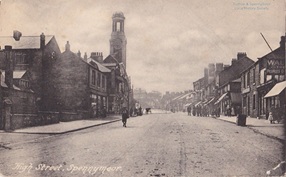
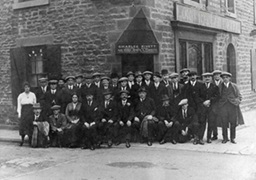 John Vardy (b1837 Durham-1902) married Mary Ann Clasper in 1859. They lived at 105 Weardale Street, Mount Pleasant, Spennymoor and had three children, Mary Ann, John and James. John was a blacksmith in 1871, by 1881 he is registered blind.
John Vardy (b1837 Durham-1902) married Mary Ann Clasper in 1859. They lived at 105 Weardale Street, Mount Pleasant, Spennymoor and had three children, Mary Ann, John and James. John was a blacksmith in 1871, by 1881 he is registered blind.
The Lord Raglan Hotel, 21 High Street, was in a prominent position at the junction of Villiers Street and High Street, it was demolished in 1960s and made way for the entrance to the precinct shopping centre.
TUDHOE CRICKET CLUB - The annual supper in connexion with the Tudhoe Cricket Club took place on Saturday evening, at Mr J T Taylor’s, Black Horse Inn, Tudhoe Colliery, when upwards of 50 sat down to an excellent spread, provided by Mr and Mrs Taylor.
After the removal of the cloths etc., Mr A Maskerry presented the prizes to the players who head the bowling and batting averages for last season, which were as follows:-
1st team
Batting Mr A G Black, cricket bag, average of 25-36 runs;
Bowling Mr Joseph Urwin, suit of cricket clothes, average of 12 72 per wicket.
2nd team
Batting, Mr J G Laidler, pair of leg-guards and trousers, average 15 11 runs;
Bowling, Mr G Ashton, cricket bag, average per wicket, 7 runs.
Mr J W Harrell was appointed as 1st team captain, in lieu of Mr Maskerry, who is leaving the district to take up a situation in Derbyshire. (13th April 1900 Durham County Advertiser)
Rugby Football - The Durham Cup Final Tie
West Hartlepool v Tudhoe
About 10.000 people assembled at Westoe to see the final tie of this competition. In the end victory rested with West Hartlepool by a penalty goal and a try to 1 try. They began trongly, and in fifteen minutes Gallagher scored a try. Ten minutes later Tudhoe equalised through Cockayne, and the teams crossed over level at the interval. In the second half the game was very even. A penalty goal by J T Taylor enabled West Hartlepool to win the match. (22nd April 1900 The Referee)
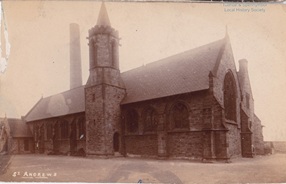
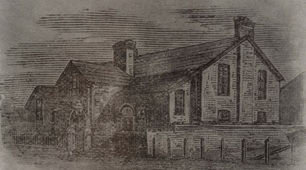 St Andrew’s Parish, Tudhoe Grange - The 18th annual Easter tea and concert in connexion with St Andrew’s parish, Tudhoe Grange, was held in the Mission Hall, on Monday. A large number of people sat down to an excellent tea in the afternoon. The tables, five in number, were provided by the following:-
St Andrew’s Parish, Tudhoe Grange - The 18th annual Easter tea and concert in connexion with St Andrew’s parish, Tudhoe Grange, was held in the Mission Hall, on Monday. A large number of people sat down to an excellent tea in the afternoon. The tables, five in number, were provided by the following:-
Mrs Fenton, the mothers of the parish, the Girl’s Bible Class, Rev G R Cook’s Men’s Bible Class, and Mr G Wallace.
In the evening a representation of Miss Wingate’s operetta. “Aladdin” was given by the members of the choir, under the direction of Mr Wm Dixon, Tudhoe Grange. The proceeds were in aid of the sustentation fund of the parish. (20th April 1900 Durham County Advertiser)
Wanted, information of William Dawson, sinker, late of Sunnybrow, Durham, who went to Prussia 32 years ago; last heard of from San Francisco and Table Mountain Mine, State of Senora, Mexico, in 1889. His daughter Margaret Hopper, Tudhoe Colliery, Spennymoor, enquires. (7th April 1900 Newcastle Chronicle)
Margaret Dawson was born on 17th September 1867 at Sunnybrow, the daughter of William Dawson and Phoebe Jackson. She married William Hopper, a decorator and painter, in 1901/1911 they are living at 22 Front Street, Tudhoe Colliery with their four children, Mary Ethel (b1891), Frederick Wilkinson (b1892), Nellie (b1896) and William Dawson (1904).
Did Margaret ever find her father? In 1871 a three year old girl called Margaret Dawson, born in Sunnybrow, was boarding at High Street, Willington with the Bottom family, could this have been Margaret?
International Fives Match
The final game in the international fives match between J Bessford, Cassop, and Pedro Eligalde, Spain, was decided at Tudhoe Park, on Saturday, before a large crowd. The conditions of the match were two games, 33 up each, the highest aggregate scorer being returned as the winner of a £200 stake.
In the first game a fortnight ago, Eligalde won by 33 to 13, in the English style, but with the Spaniard’s ball, and in Saturday’s game, in the Spanish style (four alleys), but with Bessford’s ball, he only required to make 14 to win the championship.
On Saturday Bessford was favourite for the game, but the Spaniard was favourite for the match in its entirety. The Spaniard went in first, and failed to score, as he also did in his five successive innings. On the other hand, Bessford made eleven the first time in. In his second he made five, third two, fourth 8, fifth nothing, and his sixth and last seven, making his 33, and not allowing the Spaniard to score a single chalk.
Bessford’s total score in the two games was 46, Eligalde’s 33, so that the popular English champion won the match by 13 chalks. (7th April 1900 Leeds Mercury)
WHITE LEGHORNS - Can supply sittings of Eggs from ny Prize Winners at Blackburn, Combe, Thornaby, Cleatormoor, etc.: also won prizes for eggs last season; Settings 5s and 3s 6d. Particulars apply B Cowell, Marmaduke-st, Tudhoe Grange, Spennymoor. (6th April 1900 Daily Gazette for Middlesbrough)
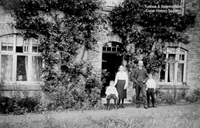 Burton Beck Farm, Spennymoor
Burton Beck Farm, Spennymoor
Highly Important Displenishing Sale.
Mr Joseph Vickers favoured with instructions from Mr Henry Walker, who is retiring from farming, will SELL BY AUCTION, on Wednesday, April 25, 1900, the whole of his very Valuable FARMING STOCK, including Horses, Cattle, Seep, Pigs, Poultry, Implements, Dairy Utensils, etc. Full particulars on Posters. Sale at 12.30 prompt. Mart Offices: Tow Law.
(25th April 1900 Northern Echo)
Mr George Byers, the newly elected Chairman of the Spennymoor Urban District Council, is a man of much experience and practical knowledge. He was for several years a member of the old Local Board of Health. He was elected one of the first members of the Urban Council in 1895. At the last general election in 1898 he was returned at the head of the poll by a very large majority as a “progressive candidate”, and has served during the last few years in the capacity of vice-chairman. He is noted for his kindly and obliging disposition, and is a man who is thoroughly conscientious in all that he does and says.
His father, the late Thomas Byers, who came from Witton-le-Wear nearly 50 years ago, was one of the pioneers of Spennymoor, and with others… formed the Spennymoor Local Board of Health, and became its first surveyor.
Mr George Byers, in conjunction with his brother William, had some experience in the laying out of many streets and the erection of some of the principal buildings of the town. They were the architects of the spacious covered market, situate in the main street, the tower of which still remains unfinished for want of a public clock. (24th April 1900 Daily Gazette for Middlesbrough)
SPENNYMOOR URBAN COUNCIL - The monthly meeting was held yesterday, and presided over by Mr G Byers. A letter was read from Mr J J Dodd stating that it was more than six months ago since the rejection of his motion for a reference and public library. He had reason to believe now that there was a much stronger feeling in favour of the scheme. And he suggested that the Council should appoint a small committee to go into the matter. He was willing to give up a portion of his own library, and he knew of another person who was willing to do the same. And he was willing to leave in the hands of the Council his subscription of £20 odd. The matter was referred to the Finance Committee for consideration. (27th April 1900 Daily Gazette for Middlesbrough)
The Spennymoor Urban District Nursing Association, originated by the late Mrs Shafto, of Whitworth Hall, has now taken practical shape. An executive committee, with Mrs Wilkinson, of Whitworth Vicarage, as president, Mrs Drake secretary, and Mrs Rowland treasurer, has been formed. The services of Miss Wilson, who resides in King-street, Tudhoe Grange, and is one of the Queen’s Victoria Jubilee nurses, have been secured. More nurses are to be engaged as the funds increase.
The nurses of this Association are employed only as district nurses, paying one, two or more visits daily to each patient on the books; they do not remain all night with a patient or in sole attendance upon any one person. All visits from the nurses are entirely free. The Association is undenominational, and the nurses are forbidden to interfere with the religious opinions of the patients. (26th April 1900 Daily Gazette for Middlesbrough)
A letter from Robert Cairns to the Children's Circle on 28th April 1900, page 2 of the Northern Weekly Gazette, then a prize on page 3.
COURAGE Dear Daddy, I hope you will forgive me for not writing sooner. You will see if you look at your list of prize winners that the last time I won a prize was October 31st, 1896; but I promise that I will write more regularly. I will conclude my letter with an essay on Courage:-
Courage is simply bravery. Some people may possess that which is called natural courage. In certain individuals courage may be aroused only for a reward which they may obtain. Courage by a reaction setting in from one courageous act may in another time when needed turn to cowardice. Look at the courage of the exploring parties who after colliery disasters, go down the mine in search of their fellow workmen, expecting at any moment to lose their own lives with the after-damp. David, the son of Jesse, was a courageous man when he challenged Goliath, the giant, to come and fight him. Courage is daring to do what is right, never thinking of the consequences which may follow.
Your loving son, ROBERT CAIRNS, 44, Edward-street, Spennymoor
(28th April 1900 Northern Weekly Gazette page 2)
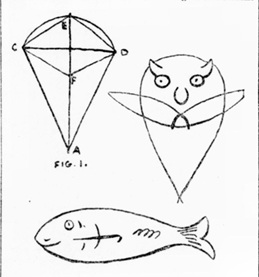 How to Make and Fly Kites - The best description of how to make a good high flying steady kite, and also a fancy shaped kite has been sent in by Robert Cairns (14), 44 Edward-street, Spennymoor, to whom a prize is awarded. I should like to congratulate Robert upon his excellent contribution. Here is the prize letter:-
How to Make and Fly Kites - The best description of how to make a good high flying steady kite, and also a fancy shaped kite has been sent in by Robert Cairns (14), 44 Edward-street, Spennymoor, to whom a prize is awarded. I should like to congratulate Robert upon his excellent contribution. Here is the prize letter:-
There are numerous forms of kites which can be made by boys. The most popular method to make them is told in the following instructions.
First of all a long lath, a split cane, plenty of good stiff paper, string, and paste are required. The lath is required for the centre piece, and the cane, which must be fastened exactly in the middle of the top of the centre of the lath, and which must be three-fourths the length of the centre piece is for the cross-piece. When fastened in the middle bend the top over, and keep in this position by means of a length of string. Take a double turn round the upright with the cord to keep it from slipping, and securely tie it. Before tying the knot, however, be sure that the two sides of the kite balance most accurately, as the least difference in weight will make it lopsided. The two long strings are tied at the same time the top of the kite is bent in position. The frame is now complete, and the next thing required is the covering. Get some stiff sheets of paper (coloured looks best) and paste it together until a piece large enough to lap over the whole frame work at least two inches all round is made. Trim this round, and then turn the margin over and paste it firmly down. This completed, cut some wide strips of paper and paste them along and over the cross-string at the back, so that the main sheet is firmly secured to the frame. Treat the upright in the same manner with wider strips, and the kite is completed.
The tassels are made by cutting two pieces of paper, and snipping up one end like a comb; roll these in the hand and paste onto the ears of the kite. To make the tail of the kite, get a piece of string about twenty times the length of the kite, and tie pieces of paper about six inches apart along the whole length of this, finishing up the end with a tassel made the same way as the ear pieces. When selecting the string for flying always select string that is strong and light. The end of the string should be fastened to a loop, which is fastened to the upright, one end about the middle, and the other about two-thirds up the kite. The loop should not be drawn tight, but allowed to hang a little. The exact point to which the string must be fastened to the loop can only be found by experiment, as it depends entirely upon the balance of the kite.
Flying the Kite - Two persons are required in order to fly the kite, one to hold it up and give it a start, and the other to hold the string and run a little way against the wind to help it on its course. As soon as the tail is off the ground, the kite will do very well with itself, that is, of course, if there is any breeze. A boy who is sharp may construct for himself almost any pattern of kite. It does not make one atom of difference so long as the frame is correctly balanced, of what design the kite. With a box of water-colours and some crinkled paper some very eccentric patterns may be made. One of two designs which may prove suitable accompany the directions.
ROBERT CAIRNS (14), 44, Edward-street, Spennymoor
(28th April 1900 Northern Weekly Gazette page 3)
Death of the Rev. A D. Shafto - The death occurred late last night at Brancepeth of the Rev. Arthur Duncombe Shafto, for 46 years rector of that place, and one of the most widely known public men of the County of Durham. Mr Shafto who had attained the great age of 86 years, had been in failing health for a year or two past, and had a sort of seizure in a shop in Durham about two yeas ago. A naturally vigorous constitution, however, enabled him to rally again, and though he never took the same active part as he had done in his long and busy life, in public affairs, he was yet able to attend many of the duties he had imposed upon himself up to a recent date, and was able to be out up to Saturday last.
On Tuesday of the present week he became worse again, and Dr Stuart, of Durham, his physician, was telegraphed for. Medical aid, however, was of no avail, and Mr Shafto gradually sank and passed away last night to the great grief of all who knew him.
The Rev Arthur Duncombe Shafto was a member of an old and famous North-country family, whose deeds have often been recorded in local annals, and whose prowess has been celebrated both in song and story. Early in life the rev. gentleman devoted himself to an ecclesiastical life and graduated at Durham University. In 1841 he was ordained, and, subsequently was vicar of Byers Green and Whitworth. After this he was rector of a parish in Hampshire, and in 1854 he was appointed to the rectory of Brancepeth, which he has since held, and which is returned at the value of £700 and house.
Mr Shafto in 1842 married Miss Dorothy Wilkinson, of Harperley Park, a sister of the present Bishop of Hexham and Newcastle, and daughter of the late Mr G H Wilkinson. He had a numerous family, consisting of four sons and two daughters. A strange fatality has hung over the family, for two of Mr Shafto’s sons, who held commissions in Her Majesty’s service, were killed, one at the blowing up of a magazine in India and another in the Naval service. One of the daughters, who married the Right Hon. John Lloyd Wharton MP, also dies under tragic circumstances, and all that are left are C D Shafto, of Durham, and Mrs Randolph, wife of Capt. Randolph, who has just recently been called to a command at the Barry camp owing to the war in Africa. The services of Mr Shafto to the Durham district are well-nigh incalculable. (1st March 1900 Daily Gazette for Middlesbrough)
He was the son of Robert Eden Duncombe Shafto and Catherine Eden of Whitworth Park, his mother was the third daughter of Sir John Eden of Windlestone.
He held many positions including chairmanship of the Finance Committee of Durham Quarter Sessions, Durham County Council Finance Committee, Durham County Police Court, Durham County Hospital Governors, Durham Penitentiary, Durham Guardians and the Rural Council.
He was an Alderman, member of the Standing Joint Committee of Durham County Council, Trustee of Durham County Police Superannuation Fund and Chairman of Durham County Club. In 1896 he was presented with a portrait by Durham Guardians for his long service. (1st March 1900 Newcastle Daily Chronicle)
Baptist Church Spennymoor - The Re-Opening Services in connection with the Baptist Church, Spennymoor, was held on Wednesday. The whole of the alterations consisting of renovation and re-seating the building have cost the sum of £300. The Rev A F Griffiths, AFS of Newcastle -on-Tyne preached a very powerful sermon in the afternoon. The collection amounted to £15. A public tea was held afterwards, given by Mrs Savage, at which a large number was present. The tea realised about £5. There was also a sale of work, conducted by Mrs Henry Pearson and Mrs N Bennett, which will bring the day’s proceedings up to about £40. There was a public meeting held after the tea with several speakers. A vote of thanks was given to Mr Reay, of Stockton, for a gift of stone, and to the “men’s own” of Mr Feltham’s Church Stockton, for a bible an Hymn Book; Mrs Savage, for providing tea; Mr and Mrs Bennett for furnishing the platform; Sir Chris Furness for the gift of £5 5s; and Mr J W Hanson, architect, who planned the work free of charge. Mr R Telfer, Spennymoor, was the contractor, and finished his work in a very satisfactory manner. The collection at the public meeting realized £10 7s 10d. (2nd March 1900 Northern Echo)
Spennymoor Wesleyan Day Schools – Tenders are invited for New Infants School and Alterations and Additions to the Existing Schools.
Plans and specifications can be seen on application to Mr Smith, the Headmaster, from 9 to 4 pm, and Quantities will be furnished to intending contractors by the Architect, J Walton Taylor, FRIBA, Newcastle-on-Tyne. The Managers do not bind themselves to accept the lowest or any Tender.
Tenders, marked “School”, to be sent to the undersigned not later than April 3rd.
W M DUTHIE, Secretary 113, Craddock-street, Spennymoor. (15th March 1900 Daily Gazette for Middlesbrough)
The Weslyan Methodist Education Committee in London will this week issue their sixtieth annual report, which is of an exceptionally encouraging character. It states that the day school departments now number 743, with a total of 159,716 scholars, and an average attendance of 18,992. The total income of the schools is reported to be £272,958, being an increase of £25,649; the total expenditure is £283,290, an increase of £24,878……
At Spennymoor and Bishop Auckland progress is reported. (27th March 1900 Daily Gazette for Middlesbrough)
The Spennymoor Good Templars have concluded their fifth season of Pleasant Sunday Evenings. They are the most aggressive temperance organization in the whole district. They contemplate building for themselves a place of their own in which to hold their meetings. The need for a Temperance Hall in Spennymoor was never greater than at the present, and the Good Templars were never in a more prosperous condition. A Temperance Hall did once exist in the locality, but being situate in such an out-of-the-way place as Low Spennymoor it was never patronized as it might have been had it been in a more central position. That hall is now in the hands of the Tudhoe parish, and is now known as the Parochial Hall. The Good Templars have now a membership of nearly 150. (30th March 1900 Daily Gazette for Middlesbrough)
MERRINGTON ASSAULT CASE - At Bishop Auckland yesterday, John Ray, deputy, Leasingthorne, represented by Mr J T Proud, was proceeded against for having assaulted a married woman named Margaret Kitching, at Merrington, on the 10th ult.
Complainant, for whom Mr Wood appeared, stated that when driving on the highway between Leasingthorne and Merrington, defendant came up behind the phaeton and molested her daughter and herself. He followed the phaeton to the doorway of complainant’s house where it was alleged he struck both complainant and her daughter.
For the defence it was stated that defendant, in order to get the easier over the snow-bound road, put his hand on the back of the phaeton. Complainant and her daughter were alleged to have then struck him with their umbrellas. Fined 1s, and 13s costs. (2nd March 1900 Northern Echo)
Thefts in the Spennymoor District - At the Durham County Police Court yesterday, three youths named Frederick Gooding, Walter Gooding, and Richard Jackson, of Merrington-lane, were charged with stealing ten pigeons, value £1 8s, the property of Joseph Finchell, of Mount Pleasant, Spennymoor, on the 28th of last montyh, and were each fined 3s and costs.
Thomas Common and Abraham Healey, miners, of Spennymoor, were fined 12s 6d and costs each for stealing a quantity of broccoli, value 7s 6d, from a garden belonging to James Hall, at Tudhoe Grange, on Friday last.
John Stringfellow(13), of Tudhoe Grange, was ordered to be detained in custody for a week, and then sent to a reformatory for five years, for stealing a pair of boots, value 3s 11d, from Mr Richard Swales’ shop, at Tudhoe Grange.
Ann Wrangham, domestic servant, and Jane Perry, were charged with stealing a quantity of dress material, value £2, from Mrs Fenwick, of Low Spennymoor. Perry was discharged, and Wrangham was fined £1 including costs. (29th March 1900 Northern Echo)
Auckland Workhouse - There is in the Auckland Workhouse at the present time a man who is nearing 101 years of age. His name is Thomas Kenney, and he belongs to Spennymoor. The old man is lively, and takes his turn at chopping sticks like anyone else. (16th March 1900 Daily Gazette for Middlesbrough)
Durham County Asylum – Wanted LAUNDRYMAIDS: wages commence at £20, rising to £22 at the end of three months, paid monthly, with lodgings, rations, washing, and uniform, etc.
Apply, enclosing copies of 3 testimonials and photograph, to the Medical Superintendent, Durham County Asylum, Winterton, Ferryhill. (19th March 1900 Yorkshire Post and Leeds Intelligence)
The Spennymoor Suicide - Coroner J T Proud held an inquiry at the Wheat Sheaf Inn yesterday touching the death of Hesekiah Webb (58), who died by suicide, having hanged himself in his house, 115 George-street, Spennymoor.
Mr Jas. Gommersall said he had known Webb for over thirty years. Webb was lodging with Mrs Ann Sherrington, a widow, who had lost her husband in the Page Bank explosion over twenty years ago. Mrs Sherrington having died last week, and the house belonging to Page Bank Colliery, deceased had been informed that he would have to leave. This seemed to trouble him, and no doubt was the cause of him taking his life.
Mrs Gommersell, wife of the first witness’s son said she heard deceased moaning and wandering about during the night. On Wednesday about noon she went into the house and was startled to find him hanging by the neck under the step ladder which was behind the door. She immediately gave the alarm. A fender was under him, and he had evidently stood on it.
PC Steel stated that one morning last week Webb said to him “I’ve buried the old woman, and I’ve no desire to live”.
Mr Wm Thompson, of Curry Brothers, musical instrument dealers, stated that he was passing the house on Wednesday afternoon, and went in and cut the body down. Witness did all he could to restore animation, but life was extinct. He evidently had not been long dead.
The jury returned a verdict of suicide whilst temporarily insane.
The jurymen’s fees were handed over to the local reservists fund. (2nd March 1900 Northern Echo)
Yesterday the Rev. John Gaskill, who for over 38 years has been vicar of Spennymoor, died at the Vicarage, after being confined to his bed for the past fortnight. The rev. gentleman was in his 81st year, and during his time the church has been enlarged three times. During his time, until failing eyesight failed him, he was a most active member of the Tudhoe U. D. School Board and the Spennymoor Local Board of which he was chairman, and for a number of years was editor of the “Durham County Advertiser”. He was widely known and much respected. (3rd March 1900 Daily Gazette for Middlesbrough)
Rev John Gaskill was curate for 13 years and became vicar in 1875. He was buried on 6th March, in attendance were his sons Rev. Joseph Gaskill, curate of Ilkley, Jas. Gaskill, colliery manager, and his daughter. The funeral procession was headed by the Whitworth Lodge of Freemasons (9th March 1900 Durham County Advertiser)
DURHAM COAL TRADE – IMPORTANT DEVELOPMENTS - Messrs Bolckow, Vaughan & Co. contemplate putting down an important mining plant at Chilton, Ferryhill. An immediate commencement is to be made with the sinking of the necessary shafts. Mr J W Cook, the company’s Byers Green and Newfield Collieries agent, has the undertaking in hand. (13th March 1900 Northern Echo)
Lloyd's List - It is probable that in no other part of the country are so many schemes in progress for developing the industrial resources of the district as in South Durham. New railways are being built – new collieries sunk and old mines opened out – works extended, and docks improved to meet the growing demands of the iron and coal trades. The latest addition to these enterprises is the opening out of another colliery by Messrs. BOLCKOW, VAUGHAN, and Co. (Limited). This firm find great difficulty in meeting the increasing demands of their ironworks from their existing collieries, and have now decided to work the Chilton Colliery, a lease of which they acquired about three years ago. This colliery is situated a little to the south of Ferryhill, and about 15 miles west of the Hartlepools. It is an old mine, having been previously worked by the South Durham Coal Company, but was closed about 20 years ago during the depression succeeding the great “boom” of the early seventies. A new shaft will be sunk, and a number of ovens erected for the manufacture of coke, of which the company’s Cleveland and Clay Lane Blast Furnaces are large consumers. (20th March 1900 Lloyds List)
Lighting - The effort which the Spennymoor Urban Council is making to have the streets illuminated by electricity instead of the present unsatisfactory system of gas lighting is deserving of all praise. The present charges for gas in Spennymoor are far too high. Viz., 3s per 1,000 feet. (14th March 1900 Daily Gazette for Middlesbrough)
Electric Lights for Spennymoor – At a special sitting of the members of the Spennymoor Urban District Council it has been decided to adopt the electric lighting system throughout the area of the urban district of Spennymoor. (24th March 1900 Newcastle Courant)
SCHOOL ATTENDANCE CASES – Joshua Manchester, Hett, was summoned in respect of the irregular attendance of two children.
Mr W Lisle appeared on behalf of the Board, and Wm. Hopkins, the school attendance officer, proved the irregularity of the attendances. Fines 5s in each case.
In the case of Elizabeth Lowe, Croxdale, summoned in respect of two children, an order for attendance was made.
Thomas Harrison, Hett, was fined 5s
Thomas Blackburn, Hett, in respect of two children, was ordered to send them regularly
Henry Stubbs, Hett, summoned in respect of two children, was also ordered to send the children regularly. (16th March 1900 Durham County Advertiser)
Appointment of Sanitary Inspector, at Spennymoor. On Thursday night, at the monthly meeting of the Spennymoor District Council, Mr J H Gardner, of Sedgefield, was appointed Sanitary Inspector, at a salary of £140 per annum. There were 143 applications for the office. (30th March 1900 Newcastle Evening Chronicle)
PRIZE - LINSEED TEA. So valuable for colds and so nourishing, yet so inexpensive, is made by boiling three tablespoonfuls of the seeds of linseed in three pints of water till reduced to a quart, then strain it off, sweeten with Spanish liquorice, barley sugar, or, if preferred, with honey, and add the juice of one lemon. This is a well-tried recipe, and very nice. Mrs W Maddison, Merrington-lane, Spennymoor, Durham. (17th March 1900 Northern Weekly Gazette)
DEATH OF MR J.T. HEDLEY OF DURHAM. A Durham “Old Standard”
There died, on Wednesday night, at his home in Crossgate, Durham, Mr J. T. Hedley, yeast merchant, one of the old “standards” of the City, and a man who in several ways was noteworthy. A Northumbrian, we believe, by birth, Mr Hedley was a butler in his younger days, but many years ago he established a yeast dealer’s business in Durham, and enjoyed a good connection. For nearly 40 years Mr Hedley walked daily with his yeast basket upon his arm from Durham to Spennymoor and back, and this journey he kept up from habit and choice long after the railway was opened between Durham and Croxdale, and the use of which would have saved him an eight mile walk every day.
Mr Hedley, who was a member of the Primitive Methodist Connexion, built and endowed a place of worship for that body in the Spennymoor district. His long and intimate association with the district constituted Mr Hedley an authority on many matters of public interest, and though a man of modest and retiring disposition, he was an entertaining companion. He had many friends and acquaintances in the town, and the district through which his daily route extended, and these, for all of whom he had ever a kindly word and a genial smile, will hear of his death with much regret. Mr Hedley, who was considerably, over 80 years of age, leaves a widow and family. (22nd March 1900 Newcastle Evening Chronicle)
To view more information about Mr Hedley, the Hedley Memorial Hall and read his poem "J T Hedley's Long Journey" click here.
WANTED, Trustworthy Young WOMAN to manage SEATON’S TOFFEE STALL in Spennymoor Market. Apply on Saturday, at 3pm. (2nd March 1900 Durham County Advertiser)
IMPROVER - Wanted to the Painting and Decorating Trade; first-class shop. Wilson, Painter and Plumber, Spennymoor. (3rd March 1900 Daily Gazette for Middlesbrough)
BOOTS – Junior Salesman Wanted; good window dresser, Apply, stating age and wage required, to Longstaff’s, 12, High-street, Spennymoor. (7th March 1900 Daily Gazette for Middlesbrough)
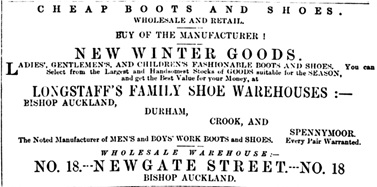
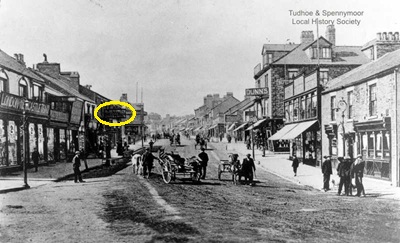 (The Longstaff business was started by Robert Longstaff in Newgate Street, Bishop Auckland by 1841. Robert and his wife Ann had six children. In 1851 he was employing 5 men and 3 apprentices, by 1861 he was employing 12 men, in 1871 his three sons are all helping in the business.
(The Longstaff business was started by Robert Longstaff in Newgate Street, Bishop Auckland by 1841. Robert and his wife Ann had six children. In 1851 he was employing 5 men and 3 apprentices, by 1861 he was employing 12 men, in 1871 his three sons are all helping in the business.
Kelly’s directory for Spennymoor, 1879 states “Robert Longstaff, wholesale and retail boot and shoe maker, High Street, & at Market Place, Durham; Church Street, Crook; & Middle Street Consett; Wholesale warehouse & manufactory 18 Newgate Street, Bishop Auckland.”
In 1881/91 Henry Longstaff (Robert’s son) is at Bishop Auckland, with his wife Rachel and they have three daughters and two sons. In 1881 he is employing 42 men, 23 boys and 10 girls. He trades at the shop in Spennymoor until 1890s, by 1902, 12 High Street, has been taken over by Mrs Mary Jane Edgar who is also a boot and shoe dealer who was dealing at High Bondgate in 1901. By 1910 the shop has a new proprietor, Samuel Joseph Knowles, a General Draper and Boot Dealer. The “S. J. Knowles” sign from the shop can be seen on the photo of Spennymoor High Street c.1914 where Cheapside meets the High Street near the Bridge Inn. (Tony Coia & George Teasdale)
THOROUGH HOUSEMAID - wanted, upper of two; also thorough Parlourmaid, good plate cleaner and waitress. State all particulars by letter to Mrs Duncombe Shafto, Whitworth Park, Spennymoor. (13th March 1900 Yorkshire Post and Leeds Intelligence)
APPRENTICE - Wanted to the Tailoring Trade. Apply Taylor, Tailor, Spennymoor. (14th March 1900 Daily Gazette for Middlesbrough)
Was this George William Taylor
HEATERS, - Two. Wanted, steady and competent Men, for Iron Guide and Merchant Mill. Write with full particulars to manager, Spennymoor Iron Works, Spennymoor, Co. Durham. (15th March 19000 Sheffield Evening Telegraph)
TO TAILORS. - Good General Hand Wanted; permanent employment to suitable man. Apply Thomas Christelow, Cheapside, Spennymoor. (22nd March 1900 Daily Gazette for Middlesbrough)
SALE OF UPWARDS OF 100 FAT CATTLE and 200 FAT SHEEP - THE WEARDALE IRON AND COAL CO. LIMITED
TUDHOE MOOR FARM
IMPORTANT SALE OF UPWARDS OF 100 FAT CATTLE and 200 FAT SHEEP
MR JOSEPH VICKERS
Instructed by the Weardale Iron and Coal Co Limited, will SELL BY AUCTION,
At Tudhoe Moor Farm, on Monday April 2nd, 1900.
The following Fat Cattle &c:- Stones
40 Three-year Old Bullocks ......50 to 75
16 Young Cows ...................45 to 65
45 Three-year Old Fat Heifers ...40 to 55
200 Prime Fat Sheep
The Cattle have been stall fed since October, and are all worthy the attention of Butchers and Dealers, being one of the best lots of Fat Stock ever offered at Tudhoe Moor.
Purchasers will be allowed one week’s keep free of charge.
Luncheon will be provided at 12.30 for Purchasers.
Sale to commence at 2.30 o’clock.
Trains arrive at Croxdale at 11.37 am, and Spennymoor at 11.26 am and 2.6pm from Bishop Auckland, and 2.15pm from Ferryhill.
‘Bus will meet Train arriving at 2.6pm from Bishop Auckland, and return in time for 5.3 Train.
Tudhoe Moor Farm, March 19, 1900 (30th March 1900 Durham County Advertiser)
North of England Dental Company Mobile Dental Company visiting Spennymoor at T. A. Burdon’s Chemist, High St. every Thursday, 10.30am to 2.30pm. (2nd February 1900 Durham County Advertiser)
Tudhoe School Board Election The members elected are:-
Provost Watson
William D William Dakers, colliery manager
Thomas Black, works manager
John Coldwell, auctioneer
Hope Scott, presbyterian minister
Matthew Lawson, miner
John Rogerson, stores manager
William Nicholson, engineman
Peter Hughes, clergyman
William Keers, miner
Daniel McKinley, primitive methodist minister
Charles Lumsden, Wesleyan minister
William Outhwaite, steelworker
Not elected:-Birchall miner, Patterson miner, Pearson insurance agent, Fleming accountant, Dodd solicitor, Reavley newsagent, Farthing chemist, and Robson deputy overman. (1st February 1900 Sunderland Daily Echo)
Tudhoe School Board - Mr John Rogerson Elected Chairman, the respected manager of the Spennymoor Branch of the Bishop Auckland Co-operative Stores, has been unanimously elected chairman of the Tudhoe (U.D.) School Board. Mr Rogerson is a man of many parts. He is a local preacher in the Primitive Methodist denomination. For nine consecutive years he has been a member of the Tudhoe School Board, and has taken a keen interest in all educational matters. He has made himself acquainted with all that is essential for the discharge of the duties of a chairman of a School Board. As a public man he has a good record. As a Guardian of Bishop Auckland Union he has done excellent work. As chairman of the Board of Guardians he was never once absent from a meeting during his term of office. The Tudhoe School Board district is a very wide one. There are nearly 5,000 children on the roll books. It may be noticed that due honour was paid to Provost Watson in appointing him vice-chairman. Provost Watson has been a member of the Board ever since its formation in 1877, and for a number of years was its respected chairman. He was placed at the head of the poll in the recent election. Mr T Black, J.P., the retiring chairman, has fulfilled the duties of chairman during the past six years with great credit to himself and every member of the Board, as well as every teacher of the staff. (22nd February 1900 Daily Gazette for Middlesbrough)
John Rogerson (1850(Hunwick)-1911) married Jane Moore (1846(Cannyhill)-1921) in 1872. In 1881 they are living at 16 Lower Tenters Street, Bishop Auckland where John is secretary to YMCA, cashier to Co-operative Society and they have a daughter Amelia Jane (b1874). In 1891 they are at Beaumont Terrace where John is manager of Spennymoor Co-operative Stores and they have a second daughter Alethea Ada (b1881). The family remain in Beaumont Terrace until 1911 when John dies suddenly on 24th August 1911. John and Jane had driven to Bradbury to see some cattle and John took ill shortly after they left and they had to return to the farm but he died in a very short time. He had worked for the Co-op for 42 years, the last 29 as manager of Spennymoor Co-op. He took a keen interest in public affairs: Tudhoe School Board where he was chairman until the passing of the Education Bill in 1902 when he said the Board was “snuffed out”. He was one of the first co-opted members of Durham County Education Committee, served on the Bishop Auckland Board of Guardians representing Spennymoor, a local preacher for Primitive Methodist Church and supporter of the Liberal party. (25th August 1911 Durham_Chronicle)
Tudhoe Ford
For fully two years the Spennymoor Urban Council have been trying to get some improvements carried out at Tudhoe Ford. The County Council were first approached, but after surveying the scene they refused to have anything to do with it. It was, however, recognized to be the most dangerous ford on the River Wear, and the Spennymoor authority would not let the matter drop. It was then that the Durham Rural Council were communicated with. After negotiations a joint deputation was appointed to visit and present a report. The result is that the Durham Rural Council have refused to have anything to do with the project. The only way out is for the Spennymoor Urban Council to do the whole work of improvement at their cost. (6th February 1900 Daily Gazette for Middlesbrough.)
Spennymoor Urban District Council deserve every credit for their determination not to be silenced by the authorities of the Durham Rural Council with regard to making the Tudhoe Ford passable. Deputations from the Spennymoor Urban District Council have met time after time to induce the rural authorities to repair their portion of the ford. The latest obstacle put in the way is that the cost is too great. Their Surveyor has prepared an estimate, which he says will be £551 18s 5d for the opening and protecting of the ford. In addition to that the Urban Council have been informed that the Rural Highways Committee have decided to take no further steps. At the last meeting of the Urban Council several members expressed the opinion that the estimate was exaggerated, because they had had a much lower estimate of the cost from their own surveyor. It was thought that the rural authorities were putting this obstacle in the way, and that the matter would end. However, Spennymoor people are determined not to allow anyone to rob them of their rights, and they are going to take steps to force the other side to make good their portion of the ford. This is one of the most ancient fords in the county, and should be maintained at all costs. (27th February 1900 Daily Gazette for Middlesbrough.)
Mr Knox at the UDC meeting: We are a public body, and sent here to look to public interests; yet the Chairman suggests that we take no further interest in the Tudhoe Ford. It can be opened at a much less cost than the estimate given. This includes, as I take it, the making of roads thereto.(2nd March 1900 Durham County Advertiser)
The condition of the Ford had been discussed for many years and there were several deaths. In 1864 Rev Salvin suggested posts were erected to indicate when the ford was dangerous. The ford couldn’t be closed as it was the way to Brancepeth Church, however there were already discussions to build a church on the Tudhoe side of the river.
In 1884 there were discussions about building a new bridge over the Wear, Willington wanted one at Todhills, Spennymoor at Page Bank and Tudhoe at Tudhoe Ford, the Highways committee disapproved of the Tudhoe bridge and thought the Page Bank bridge a better suggestion. In 1896 after requests from Spennymoor Urban District Council the Surveyor reported there was an accumulation of a large quantity of sand and rubbish at the entrance from the Brancepeth side of the river and the ford was impassable. It was suggested that it wasn’t wise to encourage use of the road as there was quicksand in the river at the ford, it was dangerous to anyone not well acquainted with the place.
In July 1898 the ford and stepping stones were still under consideration, Spennymoor asked Durham Rural Council to help but they refused. SUDC sent a formal complaint under section 10 of the Highways and Locomotives Act 1878 for the failure of DRDC to maintain and repair the highway from and including Tudhoe Ford in the bed of the river Wear near the stepping stones to the village of Brancepeth. The County Surveyor was to report.
In December 1898 Durham Highway Committee discussed the ford saying it had been moved higher up the river as there was a deep hole ten feet below the level of the old ford. The clerk confirmed they were responsible to repair the ford but the decision was to wait for DCC to communicate with them. In April 1899 Spennymoor’s surveyor estimated the cost as £60-£70. As the greater portion of the Spennynoor Council’s side was passable they resolved to give three months notice to Durham RDC to have the other portion made passable. In May 1899 a committee was appointed to meet DRDC. The meeting was arranged for November 1899 which led to the decision in February 1900.
In a very long advertisement for Mother Seigel’s Syrup, one of the people reviewing the product and claiming he was cured was George Ferry from 24, Rogerson’s Terrace, Croxdale. He wrote:
RIGHT AFTER DINNER “For many years I was a martyr to liver complaint and indigestion. I had a bad taste in the mouth and little appetite. After meals I was always uncomfortable. A sharp pain took me under the heart and I was troubled with palpitation.”
“I usually felt dreadfully tired and heavy. At night my sleep was disturbed and insufficient: I felt little better for going to bed. No treatment helped me until I began using Mother Seigel’s Syrup. In a few weeks that cured me, and I am now an altogether different man.” Signed George Ferry, 24, Rogerson’s Terrace, Croxdale, Durham, August 16 1899.
The advert concludes: The men and women who can eat a full and hearty meal and then sit in comfort and peace while digestion silently does its splendid work are not as numerous as they ought to be, but with every bottle of Mother Seigel’s Syrup sent to the right place one man will be added to the number. (10th February 1900 Weston Mercury)
George Ferry was born in 1848 at Shotton Colliery, he married Jane Ann Ayre (b1852 Gilesgate) in 1870 and they were living in Low Spennymoor in 1871. They had six children Sarah (b1872 Low Spennymoor), Margaret (b1877 West Cornforth), Thomas (b1879 Shotton Colliery), Elizabeth (b1881 Wingate), Maria (b1891 Croxdale), and Willie (b1895 Croxdale). George died in 1907.
Industrial School Fine At Auckland Police Court John Perry/Parry, labourer, was summoned to support his son, who was in an industrial school, and has been since 1897. He paid 1s a week towards the lad’s support until 24th of June last, when payment ceased, and he had not paid anything since.
Defendant said he had completely lost the sight of his left eye, and this had prevented him getting employment because of the Compensation Act. He worked for Spennymoor Urban Council for five years, but twelve months ago he was discharged. A couple of weeks ago, however, he got employment under the Council. He added that the loss of his eyesight was due to a splinter from a bullet. The magistrates made an order for him to contribute 1s weekly. (12th February 1900 Daily Gazette for Middlesbrough, 13th February 1900 Northern Echo)
John Perry and Catherine Sands, children Susannah, Thomas, Mary, John, Frederick.
John Perry (b1850 Staffordshire) married Catherine Sands (b1852 Scotland) in 1868. In 1871 they are living at George Street Spennymoor with a daughter Susannah (b1868 Spennymoor, baptised 1/11/1868 St Charles, RC Church Tudhoe) and son Thomas (b1871 Bishop Auckland). John is an ironworker, sadly Thomas died in 1872.
In 1881 they are at Elvet, Durham with another daughter Mary ( b1873 Spennymoor) and son John (b September 1875 Spennymoor) who is blind.
In 1891 John and Catherine live at 15 Princess Street with Susannah and a new son Frederick (b1885 Spennymoor). In 1891 a John Perry is residing at a District Catholic Asylum at 59 Brunswick Road, Liverpool, Lancashire, which was a School of Industry for the Blind. He was 15 years old and a casket maker, born in Spennymoor. Could this have been their son John?
In 1894 Susannah marries Samuel Rhodes. However in 1896 tragedy strikes as Catherine died on 28th August 1896 of anaemia and syncope (fainting), Susannah died 5th September 1896 due to gastroenteritis and pneumonia and son John died on 23rd November 1896 of Brights disease and dropsy. They all died at 28 Duncombe Street where the Perry family were living.
In 1897 Mary marries Robert Jones and in 1901 they are living at 6 Oxford Street with her brother Frederick who is visiting, he is a student at an Industrial School and I would think the child mentioned in the above court case. John (Snr) remarries to Jane Ann Parkin (b1848 Hunwick) in 1897 and they are still at 28 Duncombe Street in 1901 and 1911.
Robert and Mary Jones live at No 1 Brewery Road, Spennymoor in 1911, Robert is a brick moulder, they have three sons, Robert, Thomas and Frederick. Frederick, Mary's brother, is still living with them and he is a brick moulder. In 1921 Mary lives at 14 Catherine Street with her three sons, her father John Perry, and brother Frederick Perry. Sadly both her husband and John's second wife have died.
PIANOS AND ORGANS FOR SALE
Squire Piano, powerful tone, walnut case; £21 cash, or 14s per month.
Allison Upright Grand Piano, £27 cash, or 18s 4d per month
Hillier Organ £6 15s cash.
Fine Bell Organ, pipe top, 4 sets of reeds; £14 14s cash, or 10s per month.
All guaranteed.
R. W. Edwards, 15 Weardale Street, Mount Pleasant, Spennymoor, agent for S. S. EADES’s well-known Pianos and Organs.
(14th February 1900 Daily Gazette for Middlesbrough)
Mineral Guard Killed near Spennymoor - Engine-Driver and Fireman Injured
(17th February 1900 Stockton Herald South Durham)
On Thursday an engine was thrown off the line near Merrington Lane crossing, which was the means of disarranging the whole of the traffic between Ferryhill and Bishop Auckland. A passenger train from Bishop Auckland through Spennymoor to Ferryhill was drawn by two engines, which, after arriving at Ferryhill Station, one engine was retiring to Spennymoor about 6.30pm and on account of the storm, dashed into a mineral train near Binchester Junction, smashing the van into the trucks, with the result that the guard of the van, named Fred Ismay, married, aged 36, was instantly killed, and the engine driver, Wm. Murray, and fireman Wm. Gill, both of Fylands Bridge, near West Auckland, were injured. Murray was very much cut about the leg and arm and Gill was severely cut about the head. The driver of the engine No. 1247 of the mineral train is named George Lambert. Dr Anderson with his assistant Mr Davies, attended to the injured men who were conveyed to the North-Eastern Hotel and stayed overnight. The body of deceased was taken home to his residence, Byers Green. He leaves a widow and family of four children. Ismay was a native of Middlesbrough, where he was well known and highly respected. The platform at Spennymoor Station became completely blocked up with snow, and nearly all traffic was suspended.
The railway between Ferryhill and Spennymoor was blocked during the night, and no trains arrived in Spennymoor till a very late hour. The break-down gang were busy all night removing the wreck caused by the collision.
(23rd February 1900 Durham County Advertiser)
On Tuesday evening, Dr R S Anderson reported that the fireman Gill was out of danger. The doctor, since the accident, has been afraid of lockjaw supervening.
At the Station Hotel, Todhills, on Saturday, Deputy Coroner Badcock, opened the inquiry into circumstances touching the death of Jno Frederick Ismay (38), mineral guard, who was killed at Binchester Junction on Thursday night. It appeared that the deceased was in charge of a mineral train from Middlesbrough. It had passed East Howle, and sometime after was followed by a single engine, which had been called into requisition because of the severe storm that raged. This engine passed east Howle, and the driver was told to proceed cautiously. This he did, but owing to the storm the signals were out of working order, and the engine unexpectedly dashed into the rear of the mineral train, which, in the blinding snowstorm, the driver was unable to see. Neither the driver nor fireman of the single engine were able to attend the inquiry, which was accordingly adjourned to March 5th.
(24th March 1900 Stockton Herald South Durham) The inquest resumed, first witness Thomas Mellanby, a platelayer living at East Howle. He went on duty about 7pm on the night of the accident. He went to the East Howle signal cabin, Scott the signalman told him there had been an accident and the “advance board” was stickung. Witness found a drift of snow upon the wires which prevented the signal working, the Board was off but when he removed the snow the Board went on by itself.
Wm. Murray, engine driver, of Fyland Bridge, was next called, he said he was in charge of an empty engine, and left Ferryhill, for Bishop Auckland about five minutes to six o’clock. He had on the engine his fireman, Wm. Gill, and Fred Caperon, a porter belonging to Bishop Auckland. They reached the East Howle cabin about six o’clock, and saw the signal against him. He at once pulled up, and the signalman said he had to go to the “advance board” as he could not see it, and that witness had to give him a whistle if the Board came off all night. Witness whistled when he saw the board off, and then went on. A fearful gale was blowing in his face, and it was possible that the whistle was not heard in the cabin.
In reply to a question he said the distance from the cabin to the “advance board” was about 350 yards, so it was possible the signalman did not hear Murray whistle.
William Hobson Gill, fireman, of Fylands Bridge, who had his head swathed in a bandage, said he was on the engine with the last witness, and got to the cabin at East Howle about 6 o’clock. He heard the signalman speak to Murray, but he was at the opposite side of the engine, and the storm was blowing so strong that he could not hear what was said. He went on to the “advance board”, and Murray seeing that the board was off whistled, and they went on and ran into a mineral train near the bridge. They saw no danger light. They were going about sixteen to twenty miles an hour at the time of the accident. He saw no lights on the van of the mineral train in front of them.
Fred Capcion, porter, of Bishop Auckland, was also called, and said he was on the light engine with Murray and Gill. He corroborated the story of the other two men, the only new feature being that he said he could not remember whether the driver whistled or not when he saw the “advance board” off.
Scott, the signalman, was recalled and said that he could take the advance signal off without touching the “home board”.
The coroner said that if the jury were satisfied that there was no neglect on the part of the signalman or the driver it was a case of accidental death, and it would be their duty to return such a verdict. That was his opinion, and they must remember that it was an extraordinary storm.
Jury returned after half an hour and agreed a verdict of “Accidental death”, but recommended that the Railway Company appoint fogmen in future in case of a snowstorm, as in a fog. They thought that if there had been one on this occasion the accident would not have happened.
Mr Ellis, one of the railway officials, stated that fogmen were out that night, and it was stated so in the evidence of the opening of the inquest.
The jury gave their shillings to the widow of the man Ismay.
John Frederick Ismay (1861 N Ormsby-1900) married Sarah Ellen Tinkler (b1868 Sedgefield-1938), they were living at Battersby Junction, Ingleby in 1891 with their daughter Mary Lavinia (b1890), Fred is a railway mineral guard. A year after Fred’s death Sarah is living at Locomotive Terrace, Todhills, Byers Green with Mary Lavinia, Alfred Henry (b1895 Battersby Junction) and Joseph (b1898 Middlesbrough).
By 1911 they have moved to 22 Bell Street, Bishop Auckland, Sarah is an office cleaner for the railway company, and has two boarders, a platelayer who works for the railway and a widow Mary Allonby (b1851) who is a station lavatory attendant.
In 1921 they are still there, Sarah is still an office cleaner, Alfred Henry is a gas fitter for Spennymoor Gas Co. and Joseph is a labourer for the Rural District Council. Living with them is Mary Lavinia’s husband Arthur William Waite and their children Frederick Arthur Waite (b1919) and Maurice Ismay Waite (b1921). Mary Allonby is still boarding and is a waiting room attendant.
FIVES
International Fives Match - Bessford v Elizaldre
Inspite of the weather and advertisement in Saturday’s Chronicle a very great number of people visited Spennymoor in anticipation of the great Fives Match which did not take place. The fresh date has not yet been fixed. The Spaniard took advantage of a clause in the articles, namely, “weather permitting”. Mr Wilkinson, the proprietor of Tudhoe Park, had done everything that was possible to have the ground fit for playing and on Saturday it was better than it has many a time been in mid-summer. It is the wish of the proprietor to have the ground in good playing order. During the storm he had had every particle of snow removed from the alley and grand stand. The last visit of the Spaniard to the alley was on Wednesday last, when he considered it fit for play, but the blizzard put a stop to the game on his part. (19th February 1900 Newcastle Daily Chronicle)
Fives was a popular handball game in working class industrial areas. Fives alleys were often attached to public houses. Tudhoe Park, Durham Road, Tudhoe Grange, Spennymoor, North-eastern Hotel, Spennymoor and the Green Tree, Tudhoe all had Fives alleys.
Great Snow Storm Throughout England
Ferryhill
The storm on Thursday night was undoubtedly one of the very worst experienced in this district. On the highway vehicular traffic was entirely suspended, and unfortunately some vehicles were completely snowed up, and had to be abandoned until Saturday. In one case a hearse , conveying the remains of an old man named Smith from Windlestone Colliery to Metal Bridge, was delayed at Ferryhill Village. On the railway the officials and employees were exercised to their utmost to keep traffic moving, and they deserve every praise for the admirable way they stuck to their task under such extreme difficulties, but despite all endeavours serious blocks and consequent delays took place. Telegraph communication was entirely broken down to some of the most important centres owing to wires breaking and telegraph poles being blown down, and a goodly length of time will elapse before normal working will take place in this respect. The signals, too, were rendered defective by the drifting snow, making the task of working traffic excessively difficult at so important a junction, in addition to which the platelayers were constantly engaged in keeping the switches in working order. Notwithstanding all precautions, however, an accident happened, fortunately unattended with loss of life, but which caused much delay to mineral and goods trains. A mineral train proceeding via the Tean Valley line from Kimblesworth to Middlesbro ran off the line when near Ferryhill No 1 cabin, thereby obstructing the up main line and the down Leamside line. Mr Wilkie, stationmaster, Mr Sheppard, locomotive foreman, and Messrs Johnson and Denton, permanent way inspectors, were quickly on the spot with their assistants, and every effort made to keep passenger traffic moving pending the arrival of the breakdown gang from Darlington, under the supervision of Mr Cowperthwaite. The line was cleared about five am, the lines having been blocked about nine hours. The south mails and other important traffic were worked via the Leamside line from Coxhoe Junction past the scene of the accident.
Croxdale
The storm in the Croxdale district on Thursday was very severe. The snow, although falling soft, drifted to a considerable extent in the by-lanes, and even the more wider main roads. At the Tudhoe Five Lane Ends considerable drifts were formed so much so that the omnibus services between Spennymoor and Croxdale station was entirely suspended. Several carts were unable to get through the accumulation of snow, the horses being unyoked and taken home, some of the vehicles remaining for two days. In the neighbourhood of Hett, Butcher Race, and York Hill several of the lanes are still blocked. On the main railway line the North-Eastern Railway Company’s ploughs kept the roads clear, and a fairly good service of trains was maintained.
(23rd February 1900 Durham County Advertiser)
Explosion at Spennymoor On Friday, about the dinner hour, after returning home from work at Tudhoe Colliery, a miner named James Taylor, residing in Holborn Street, Spennymoor, was just looking over his stock of compressed powder, when, it is stated, a spark flew from the fire on the box, containing about 4 or 5 “bobbins” of powder, which instantly exploded, causing severe injuries to the man’s face and hands. The force of the explosion was so great that half of the kitchen window was blown out. His wife and child were in the room at the time of the explosion, but fortunately they were not hurt. Dr Anderson attended to the injured man, and he is now a little better, although his burns are severe. (24th February 1900 Newcastle Evening Chronicle)
Good Templar's Gathering at West Hartlepool The twenty-seventh annual session of the South Durham District Lodge, I.O.G.T. (International Organisation of Good Templars), was held in the Primitive Methodist School-room, West Hartlepool, today. Mr W Oliver, DCT(Durham County Templars) (Hartlepool) presided, and was supported by the other district officers. There was a large attendance of representatives and members. Immediately after the opening ceremony the district degree was conferred upon eighteen candidates. The report of the DCT dealt with the state of the Order throughout the district, and stated that the challenge block and gavel, awarded quarterly to the lodge showing a large numerical increase, had been won by the Rose of Eden Lodge, of New Shildon. Remarkable activity had been shown in mission work by the various lodges during the half-year. 130 public meetings had been held, and missions had been conducted at Coundon, Howden-le-Wear, Spennymoor, Tow Law, and Tudhoe, Mr Thomas Barker of Newcastle, and at New Shildon, West Hartlepool, Copley, Evenwood, and Witton Park by Messrs Thomas Bird (Doncaster) and Macmillan (Sunderland).
In concluding his report Bro. Oliver announced his inability to continue to hold the office of DCT. His resignation was accepted with regret, and Bro J W Fleming, of Spennymoor was elected to the chief chair, and Bro. E O D Sibson (Norton), district councillor. Other reports showed that the membership of the District was 1,920 adults in 44 lodges and 2,265 juveniles in 34 temples, with a balance in the treasurer’s hands of £39. (27th February 1900 Daily Gazette for Middlesbrough)
Ferryhill Station Supply Raisby Hill Carboniferous and Magnesian Limes.
First-Class for Building, Plastering, or Agricultural Purposes.
Machine-Broken Slag for roads; Crushed Slag from concrete; Ferryhill Sand, Daub, and Loam;
Red Fire, Salt Glazed, and Scoriae Bricks; Concrete Flags;
Best Portland Cement, and every description of Sanitary Goods.
EXPLOSIVES AGENTS. (2nd February 1900 Durham County Advertiser)
In November 1872 a Darlington man, Joseph Woodward, formed the Tees Scoriae Brick Company to turn slag from the Clay Lane Blast Furnace, in Eston, into shiny-blue bricks. At its peak, the Tees Scoriae Company was taking 30% of all the slag from the South Tees steelworks.
In Jan 1900, 25 years after the sanitation discussion in the Northern Echo, there still seems need for improvement.
Spennymoor Urban District Council Medical officer’s report for end of 1899 and Durham County Council Health Committee’s meeting on 24th January 1900.
The Medical officer’s monthly report showed a birth rate of 44.4 per thousand per annum and a death rate of 20.8. There were six cases of zymotic disease, and 30 were reported under the Infectious Diseases Act, mostly scarlatina. Only one case of enteric fever was notified during the month. The doctor reported in detail on the incidence of this disease in 1899, showing that, between 11th September and 18th December 1899, 22 cases had been notified, six being fatal. The cases represented 14 houses, and were scattered over a wide area. The houses possessed conveniences, all but one, ashpit privies, no case having been reported from houses provided with water closets, and there was apparently no connection with the drinking water, which was supplied by the Weardale and Shildon Water Company, nor with the milk supply, which was from many sources.
The report went on to state:-In the Ferryhill and Tudhoe Wards I attribute the outbreak, in part at least, to the street-making work which has been done in these wards; although it must be noted at the same time that during the months of January, February and March cases occurred in Ridley’s Buildings, Post Office Street, Hume Street and Burnett Street (Ferryhill Ward), and in Bessemer Terrace, Weardale and Salvin Streets (Tudhoe Ward). In June the sewer was taken up in Parkin Street, behind the dwelling where the fatal case occurred, and from that time onwards to the present date street making operations have been in progress. This has necessitated the breaking up and removal of soil which, during a long course of years, had become impregnated with sewage and filth, and at the same time sewers which were found to be in a very bad state, both as regards construction and condition, were renewed. In Spennymoor Ward I can only attribute it to nuisances connected with the privy and open ashpit system still very largely in evidence.
In September last Dr Hill personally enquired into some of the cases that had occurred, and in several streets found either the yards dirty and badly paved or else badly constructed and insanitary out-offices. In Edward, Stratton and Jackson Streets especially these defects were noticeable, and the UDC should take active steps to have them removed.
At the quarterly meeting of Durham County Council on 24th January 1900 there was a discussion on the sanitary condition of the Bishop Auckland Urban District and the prevalence of enteric fever there.
Mr J J Dodd (County Councillor for Spennymoor) said he would like to call attention to the infant mortality rate, which had been during the past quarter 272 per 1,000 births in the county, while at Tow Law it reached the appalling total of 423 per 1,000 births. He queried if a leaflet on the management and feeding of babies had been issued.
He also said Attention should also be called to the question of infant insurance. There was not a baby born in the county that was not insured from birth, and even before birth. (Laughter). He did not wish to make a charge against the people, but they knew there was cruelty to children. He thought there should be legislation regulating the insurance of children.
John Wilson MP objected to Mr Dodds insinuating that the infant mortality was largely attributable to the cupidity of the parents. It was due to other causes, among which he instanced the state of the houses in which the people had to live in some of the colliery districts. He denied that the figures quoted by Mr Dodds proved that the people for the sake of a few pounds were so murderous as to take the lives of their children, and called upon Mr Dodds to prove his statement or withdraw it.
Mr Dodds said he carefully guarded himself against making a general charge against the people of the county. He merely wished to call attention to the question of infant mortality and that of infant insurance. He agreed that parental regard in the county was equal to what it was elsewhere.
The Chairman said he could not sympathise with any suggestion that the people in this county insured the lives of their children in order to get money by doing so, and he did not think Mr Dodds thought so. It was deplorable so many children died, but the reason for it was quite plain. He continued with an example about the water supply at Hawthorn Village.
Advertisement for Dodshon’s Tailors, 44 High Street, Spennymoor.
(5th Jan 1900 Durham County Advertiser)
Joseph Dodshon (b1834 Bishop Auckland) married Elizabeth Wilkinson (b1831 South Shields) in 1861 and they were living at 44 High Street, Spennymoor in 1871 with their four children, Thomas Wilkinson (b1862), Mary Elizabeth (b1863), Joseph Henry (b1868), and Frederick George (b1870), all born in Spennymoor.
In 1881/91 they live at Belle Vue Terrace with another son Ernest Wilkinson (b1873). All the family are working in the business.
Joseph Dodshon died in 1901 and his son Thomas Wilkinson Dodshon continued the business with his wife Jessie Varley and children, Mary Elizabeth (b1894), Jessie(b1897) , Charles Joseph (b1898) and Thomas Wilkinson (b1904).
In 1901 they live at 17 Clyde Terrace and in 1911 at 6 St Paul’s Gardens. Thomas dies in 1917 when they are living at 9 The Avenue, Durham. In 1921 Jessie and the family are living at 54 Crossgate, Durham where Mary is a music teacher, Charles works for a draper’s company in Sunderland and Thomas is an electrician for a company in Saddler Street, Durham.
Auckland Police Court At the Auckland Petty Sessions, today, John Kitto was bound over to keep the peace for threatening Sarah Williams at Spennymoor, and was also ordered to pay 8s for using bad language.
Charles Whiteman, innkeeper, of Middlestone Moor, was fined £2 for supplying boys under sixteen years of age with drink. Evidence was given that one boy, named Hogarth, aged 15, was served with five whiskies on Christmas Eve, and another boy named Fisher got a small whisky and a gill of beer.
Thomas Coulson was fined 7s for using bad language at Hunwick.
Richard Redshaw was fined 10s for driving without lights at Spennymoor.
Violence at Ferryhill – an Exemplary Penalty A sturdily-built and respectably-attired fellow named Mark Dobson was charged with being drunk at Ferryhill Station and assaulting N.E.R. police-officer Bell on Saturday night.
The case against defendant was that when refused a dog ticket by the booking clerk he created a disturbance that brought Bell upon the scene. The latter heard defendant using threatening language, and when he went up to him he turned round and struck the officer in the face, knocked him against a wall, and damaged his uniform. The assistance of PC Rounsley had to be called in before defendant was taken to Spennymoor and there locked up. The bench inflicted a fine of £5 and costs, or one month in default, the Chairman (Sir William Eden) stating they were determined to make an example in the case that a stop might be put to such sort of blackguardism and assaults upon the police. (8th Jan 1900 Daily Gazette for Middlesbrough, 9th Jan 1900 Northern Echo)
History of Spennymoor - Mr J.J. Dodd’s Re-Issue County Councillor J J Dodd, of West Hartlepool and Spennymoor, has just re-issued in a cheap edition his “History of the Urban District of Spennymoor, with occasional references to Kirk Merrington, Middlestone, Westerton, Byers Green, Page bank, Croxdale, and Ferryhill.” The edition before us, which is published at the small price of 2s, is a credit to both author and printer.
Mr Dodd writes in a very racy style, every page being interesting, whilst the illustration and letterpress, which is easy for the eye, are all that could be desired. Mr Dodd not only traces the history of Spennymoor itself which is only a modern town, but deals with the original parishes.
One very interesting chapter tells the story of “The Battle of Neville’s Cross”, near Durham, and another deals with the story of the murder at Brass’s Farm by Andrew Mills. Despite the fact that this cruel murder occurred in 1683, the story is well known, and is often revived by parents to their children. We are told in the volume before us that he was gibbeted near to Ferryhill.
Old time customs such as the “sword-dance” and “guising” or “mumming”, are fully explained. These customs which were so popular a few years ago, are fast dying out. The history of the formation of Tudhoe Ironworks by the Weardale Iron and Coal Co. Limited, which has recently been reconstructed, is told, as well as the history of the Merrington Lane Iron Works, started by Messrs Coulson, and known as “Dry Bread Works”, in consequence of the loss of time.
The sad explosion at Tudhoe Colliery on April 18th, 1882, with the number of its victims and the bravery of the explorers, is graphically told. The book is a veritable encyclopaedia for Spennymoor and the surrounding district. (11th Jan 1900 Hartlepool Northern Daily Mail)
To read History of Spennymoor online click on the link Online copy in various formats.
Raines Coachbuilder - Butcher’s Cart For Sale, suitable for hawking; Flat Cart, suit bottler; and smart Handcart, suit grocer. For particulars apply Raine, Coachbuilder, Spennymoor. (15th Jan 1900 Daily Gazette for Middlesbrough)
Herbert Raine (b1868 Egglestone) was the son of John Raine (b1834) and Mary (b1836) who lived in Egglestone. In 1871/81 John was a lead smelter, in 1891 he was a mineral water manufacturer with his sons John and Thomas Gardner working with him. Herbert was a blacksmith.
In 1893 Herbert started a blacksmith business in Tudhoe Grange, in 1901 he is living at 20 King Street, Spennymoor with his sister Martha (b1875). He married Annie Wilson (b1879 Kirby in Cleveland) in 1901 and is advertising his business as “Shoeing & general smith, agricultural implement & machine repairer, builder's iron work, gates & palisading & wheelwright in general” (Kelly’s Directory 1902). In 1911 the family live at 27 Durham Road with four children, Arthur, Edith Mary, William and Annie Elizabeth.
In 1921 they are at 78 Durham Road with two more children Margery Ellen and Joan Etta. The business is at Low Grange Road, advertised as “Coachbuilders”, Herbert’s son Arthur is a carriage builder and wood worker. By 1967 they have moved into the Tower Coach Works, King Street, Spennymoor, which was originally the brewery which closed in 1902. They advertise as “Coach Builders & Engineers”. The business expanded as motor body builders for vans, lorries and buses and accident repairs. They produced mobile shops and brightly painted ice cream vans and were well known for their quality craftsmanship in Spennymoor.
In 1939 Herbert has retired and is living with Annie, Arthur, William and Margery at The Croft, North Close, Arthur and William are both managers at the works. Williams’ grandsons continued the business until they retired and it closed in 2001, the works were demolished in 2002/3.
Raine's Adverts from Spennymoor Town Council Official Guides - 1947 1967 1974 1982
Click on the link to view a list of items built by Raines.
Jobs and Oak Trees
Wanted, Strong LAD(16) for farm work, able to milk.-Apply, Welsh, Farmer, Mount Pleasant, Spennymoor. (18th Jan 1900 North Star Darlington)
TO TIMBER MERCHANTS and CABINET MAKERS-For Sale 40 Oak Trees, lying felled on the Whitworth Estate, Spennymoor. Conditions of purchase can be obtained on application to P. Stephens Esq. Whitworth Estates Office, Spennymoor, who will receive tenders up to 4th February, but does not bind himself to accept the highest or any tender. T Heron Whitworth Park, will point out the timber, which, though short, is of great age and remarkable hardness of grain. (20th Jan 1900 Newcastle Daily Chronicle)
Gardener wanted, good outdoor, quick, and industrious, attend to poultry; house and coals provided.-State wages, age, and all particulars, by letter. R Duncombe Shafto, Esq., Whitworth Hall, Spennymoor. (26th Jan 1900 Yorkshire Post and Leeds Intelligencer)
Lecture at Spennymoor on The Transvaal Under the auspices of the Spennymoor Conservative Association a lecture was given in the Town Hall on Wednesday by Mr H S Neale on the Transvaal. Mr Percy Stephens JP presided, and said that everybody was concerned about the war in South Africa. Our soldiers were not only fighting a well armed enemy but they had the great difficulties of the country to contend against.
As a country we had had a rude awakening, and we had had to pay for our lack of knowledge. He was glad to know that the country was unanimous, and having put our hands to the plough we must see that the work was carried to a successful issue. In a crisis like the present it was a grand illustration of the loyalty of our colonies to see them ending their troops to the aid of the mother country. Liberals and Conservatives alike had sunk their private opinions in the endeavour it preserve the Empire. We had the greatest Empire that had ever existed in the world’s history. (Applause) It rested with ourselves whether we were going to remain the greatest Empire. As long as we had troops coming from all parts of the Empire we had nothing to fear. (Hear, hear)
Mr Neale then commences with his lecture, which he illustrated with numerous limelight views. The photos of Generals White, Baden-Powell, Buller, etc. were loudly cheered but those of Kruger and Joubert met with emphatic manifestations of disapprobation. In the course of the lecture Mr Neale said that Jameson had a greater excuse for his raid than Mr Kruger had in invading our territory.
The 10th Hussars had boasted before leaving England that they would be the first to enter Pretoria. This has unfortunately come too true. They had entered Pretoria as the first prisoners. Mr Neale concluded by reciting in a most effective manner Kipling’s poem “The Absent-minded Beggar”. There was a capital attendance, and a collection was taken in aid of the reservists’ fund, which amounted to £2 10s. On the motion of Dr Watkin, seconded by Mr W Green, a hearty vote of thanks was accorded to Mr Neale for his lecture.
(19th Jan 1900 Northern Echo)
 Auckland Police Court – Spennymoor Licensing Case Yesterday, at Bishop Auckland, Geo. Henderson, of Spennymoor, was charged with being found on licensed premises during prohibited hours.
Auckland Police Court – Spennymoor Licensing Case Yesterday, at Bishop Auckland, Geo. Henderson, of Spennymoor, was charged with being found on licensed premises during prohibited hours.
Sergt. Newton stated that on the 7th inst, he observed a light in the window of the North-Eastern Hotel, and saw the defendant, along with the landlord of the house, with glasses before them. This was at 12.30am. He saw defendant pay for drinks once round.
For the defence evidence was adduced that the defendant had engaged a bed for the night, and what drink was supplied to him after eleven o’clock was not at any cost to himself. Cross-examined by Supt. Snaith defendant admitted that his own residence was only four hundred yards from the hostelry, and that he did not engage the bed until after eleven o’clock. The Bench imposed a fine of 20s and costs.
Hy. Titman, landlord of the house, was summoned for having kept open during prohibited hours. Mr Proud, who was entrusted with the defence, said the evidence was identical with that adduced. He added that the defendant had been in the house for 26 years, had hitherto borne a good character as a landlord, and suggested the case might be met by the payment of costs.
The Bench agreed to this course, the Chairman remarking that he hoped the landlord would take warning from the case. (23rd Jan 1900 Northern Echo)
Henry Titman was manager at The North-Eastern between 1899-1901.
Technical Instruction at Spennymoor Yesterday, a large audience was present in the Town Hall, Spennymoor, on the occasion of the distribution of certificates to the successful students in the recent Technical Instruction Examinations. Dr Anderson presided, and the certificates were presented by the Chairman of the Urban Council (Mr T Black, JP).
Mr Black congratulated the students on their success, and spoke of the great need of a Technical Institute for Spennymoor. He particularly noticed the great successes in the ambulance, mining and machine construction, and drawing classes.
After the presentation of the certificates a grand entertainment was held, presided over by Mr Chisholm (schoolmaster). Songs were contributed by Messrs Baines, Brown and Harrell, recitations by Mr Berriman and Master Brown. Miss Atkinson and Mr G W Rippon were accompanists. (24th Jan 1900 Daily Gazette for Middlesbrough)